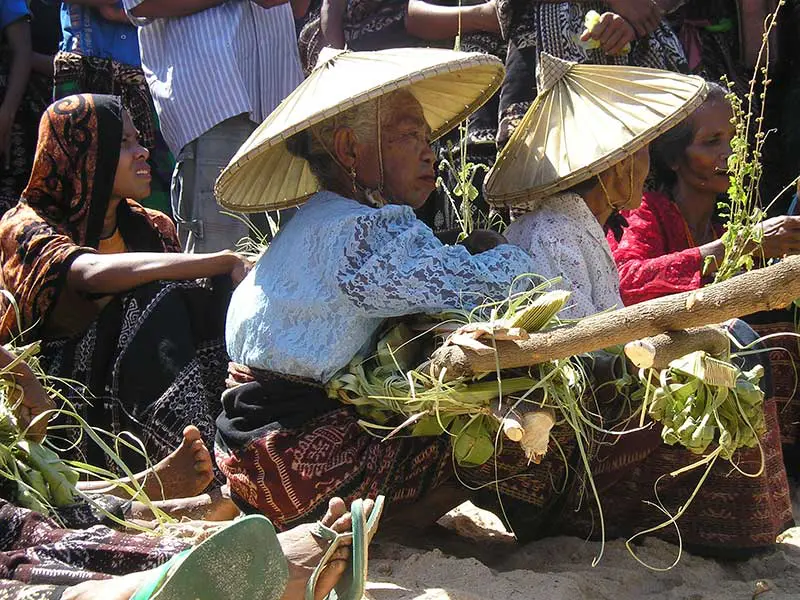Many Uses of Lontar Palm, November 2017

Dry terrain of Savu with stands of lontar palms
The Threads of Life team travelled to Timor and on to Savu this past November. While the rains had just begun, the island still was dry. Lontar palm (Borassus flabellifer)) continue to be an important resource for livelihood, sustenance and culture for the people of Savu.
The palms are climbed each morning and evening at which time the tapper harvests the liquid that has collected in palm woven baskets from the stalks of the inflorescence. He skilfully cuts the stalk so that the liquid (nira) continues to drip until his next collection trip. The liquid is delicious and can be drunk fresh as a nutritious water, cooked down into palm sugar or distilled into alcohol. All of his collection baskets (haba) are made from the fronds of the palm.

Lontar palms are climbed early am and evening for their liquid

Traditional house roofs are made from lontar palm leafs
Traditional house roofs on Savu are made from lontar palm leaves. These shaggy houses are said to represent upside down ships. As with most traditional houses, one must stoop to enter, a sign of respect to the ancestors. These roofs provide the perfect insulation for this dry hot climate, keeping the inside cool.
Many of the baskets made from the lontar palms can be quickly made for immediate needs, whether it is functional such as carrying a chicken to the market or collecting palm liquid (haba). Other baskets will be prepared in advance if they will be needed for rituals and are stored in the traditional house under the roof.

Baskets stored inside the house

Kerigi baskets are used for offerings
Threads of Life orders not only textiles from weavers but also many of these simple elegant baskets which are so much a part of the Savu culture. The motif on this textile is called kerigi which is the name of the offering basket used during ceremonies. Textile motifs often reflect aspects of life and ritual for traditional people. A kerigi basket would contain offerings of traditionally important crops such as sorghum, green bean and mung bean.
The lovely small basket (oko) made from lontar palm is called oko dwi wini has two (dwi) storage compartments. It can be used for storing seed (wini) such as the small mung bean seeds in the top and other seed in the bottom part.

Oko dwi wini is used for storing seed

Women weave baskets as needed for ritual or storage
Men and women can be seen weaving baskets. Men more often make the palm tapping baskets (haba) and women usually weave ritual baskets. Young palm fronds are soaked overnight before they are worked into baskets. Old fallen fronds are used for making roofs and sheds.
Lontar fronds are used to not only make baskets but also to enhance traditional dress for dance. Exquisite head dress are made afresh for each performance along with arm bands and enclosed baskets with seed inside that are tied around the feet and make sound as they dance.

Traditional dances with textiles and ornamentation made from lontar

At the annual Hole ceremony women wear lontar palm hats
Each year at a particular time on the Savunese calendar is the ceremony called Hole where offerings are sent to the island of Rai Jua in memory of the ancestors who first came from Rai Jua to Savu. Traditional Savunese baskets and textiles are sold at Threads of Life Gallery in Ubud.

